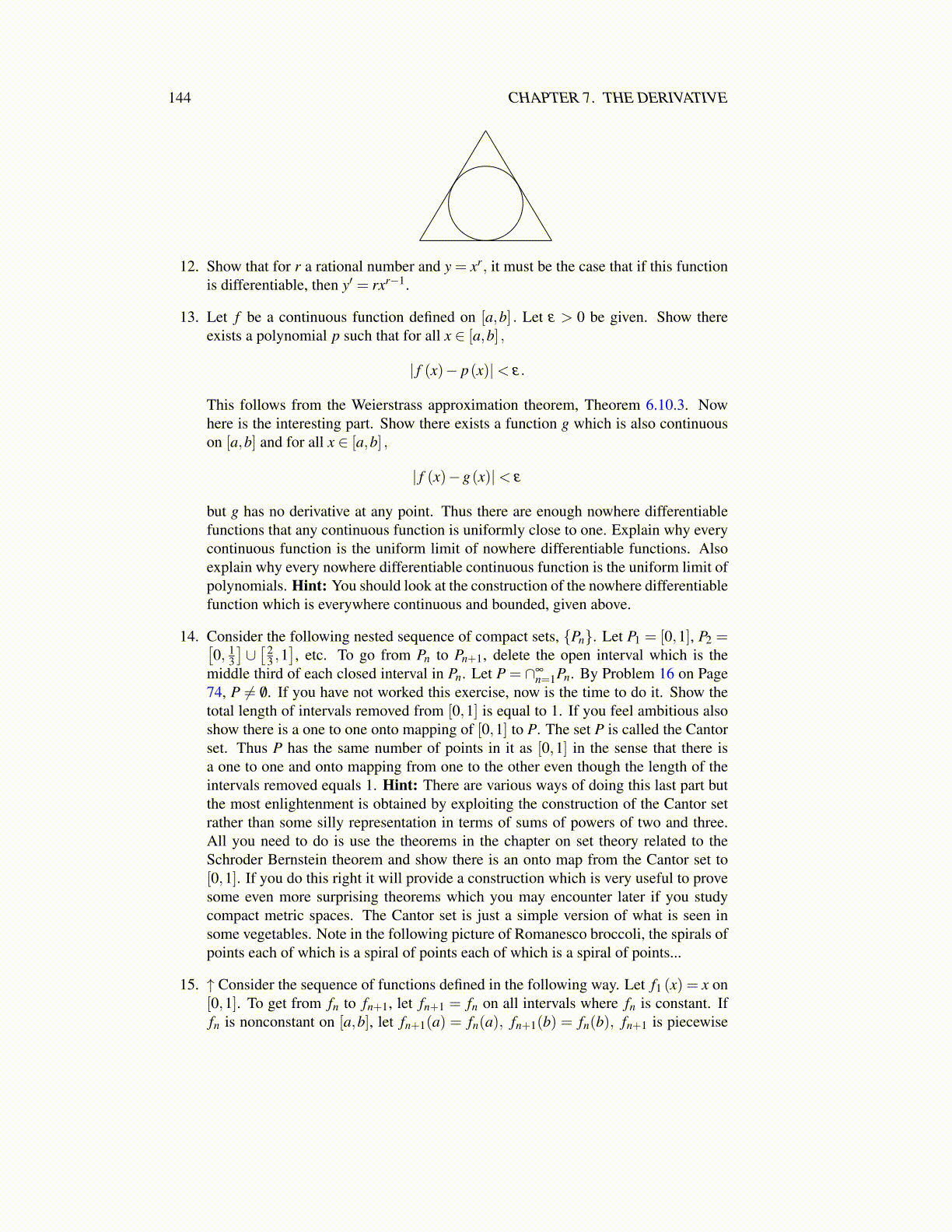
144 CHAPTER 7. THE DERIVATIVE
theorem and like the other existence theorems in analysis, it depends on the completenessaxiom.
Theorem 7.8.1 Suppose f : [a,b]→R is continuous, f (a) = f (b) , and f : (a,b)→R has a derivative at every point of (a,b) . Then there exists x ∈ (a,b) such that f ′ (x) = 0.
Proof: Suppose first that f (x) = f (a) for all x ∈ [a,b] . Then any x ∈ (a,b) is a pointsuch that f ′ (x) = 0. If f is not constant, either there exists y ∈ (a,b) such that f (y)> f (a)or there exists y ∈ (a,b) such that f (y) < f (b) . In the first case, the maximum of f isachieved at some x ∈ (a,b) and in the second case, the minimum of f is achieved at somex ∈ (a,b). Either way, Theorem 7.6.2 implies f ′ (x) = 0.
The next theorem is known as the Cauchy mean value theorem. It is the best version ofthis important theorem.
Theorem 7.8.2 Suppose f ,g are continuous on [a,b] and differentiable on (a,b) .Then there exists x ∈ (a,b) such that f ′ (x)(g(b)−g(a)) = g′ (x)( f (b)− f (a)) .
Proof: Let h(x) ≡ f (x)(g(b)−g(a))− g(x)( f (b)− f (a)) .Then letting x = a andthen letting x = b, a short computation shows h(a) = h(b) . Also, h is continuous on [a,b]and differentiable on (a,b) . Therefore Rolle’s theorem applies and there exists x ∈ (a,b)such that
h′ (x) = f ′ (x)(g(b)−g(a))−g′ (x)( f (b)− f (a)) = 0.
Letting g(x) = x, the usual version of the mean value theorem is obtained. Here is theusual picture which describes the theorem.
a b
Corollary 7.8.3 Let f be a continuous real valued function defined on [a,b] and differ-entiable on (a,b) . Then there exists x ∈ (a,b) such that f (b)− f (a) = f ′ (x)(b−a) .
Corollary 7.8.4 Suppose f ′ (x) = 0 for all x ∈ (a,b) where a ≥ −∞ and b ≤ ∞. Thenf (x) = f (y) for all x,y ∈ (a,b) . Thus f is a constant.
Proof: If this is not true, there exists x1 and x2 such that f (x1) ̸= f (x2) . Then by themean value theorem,
0 ̸= f (x1)− f (x2)
x1− x2= f ′ (z)
for some z between x1 and x2. This contradicts the hypothesis that f ′ (x) = 0 for all x. Thisproves the theorem in the case that f has real values. In the general case,
f (x+h)− f (x)−0h = o(h) .